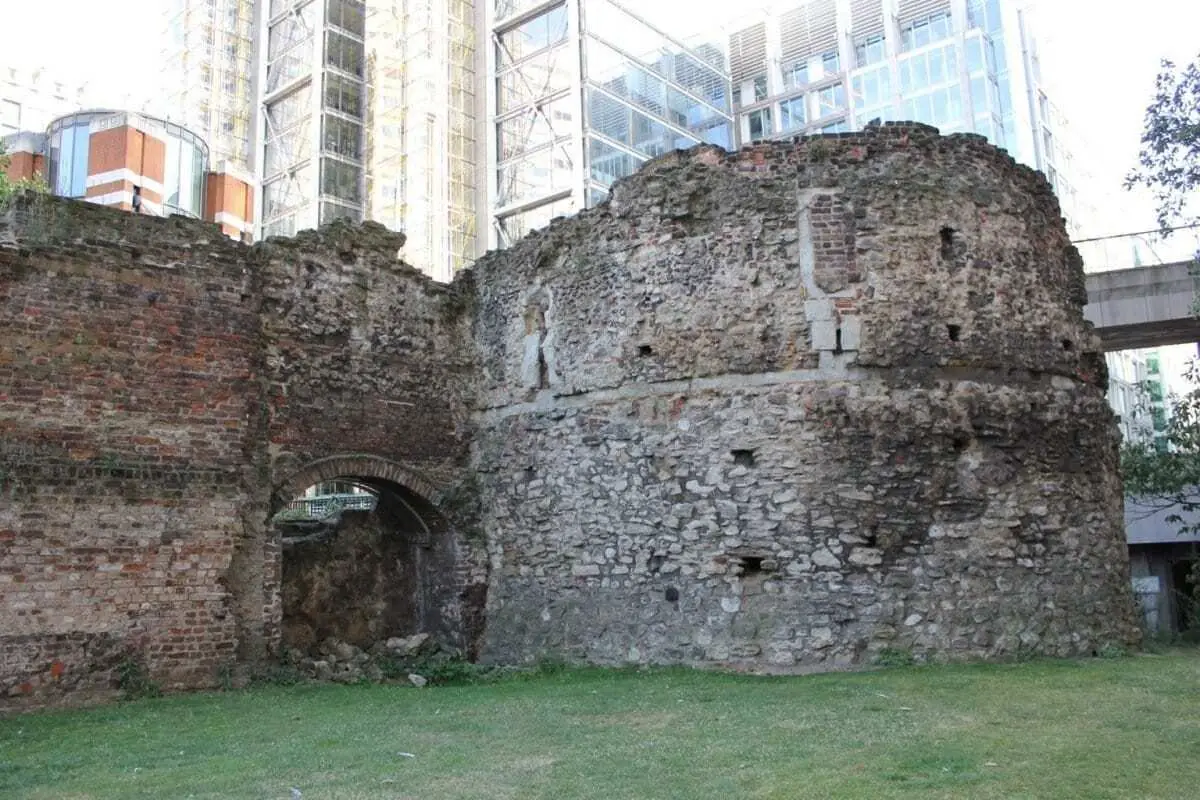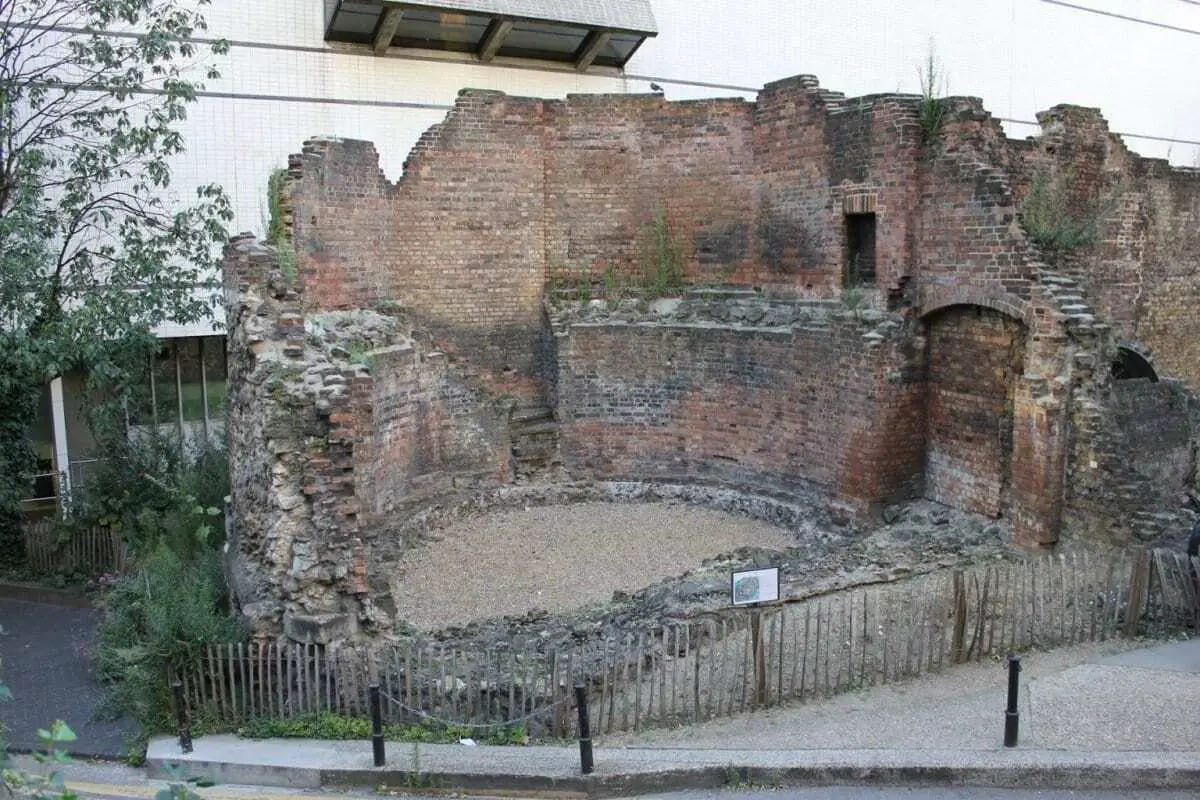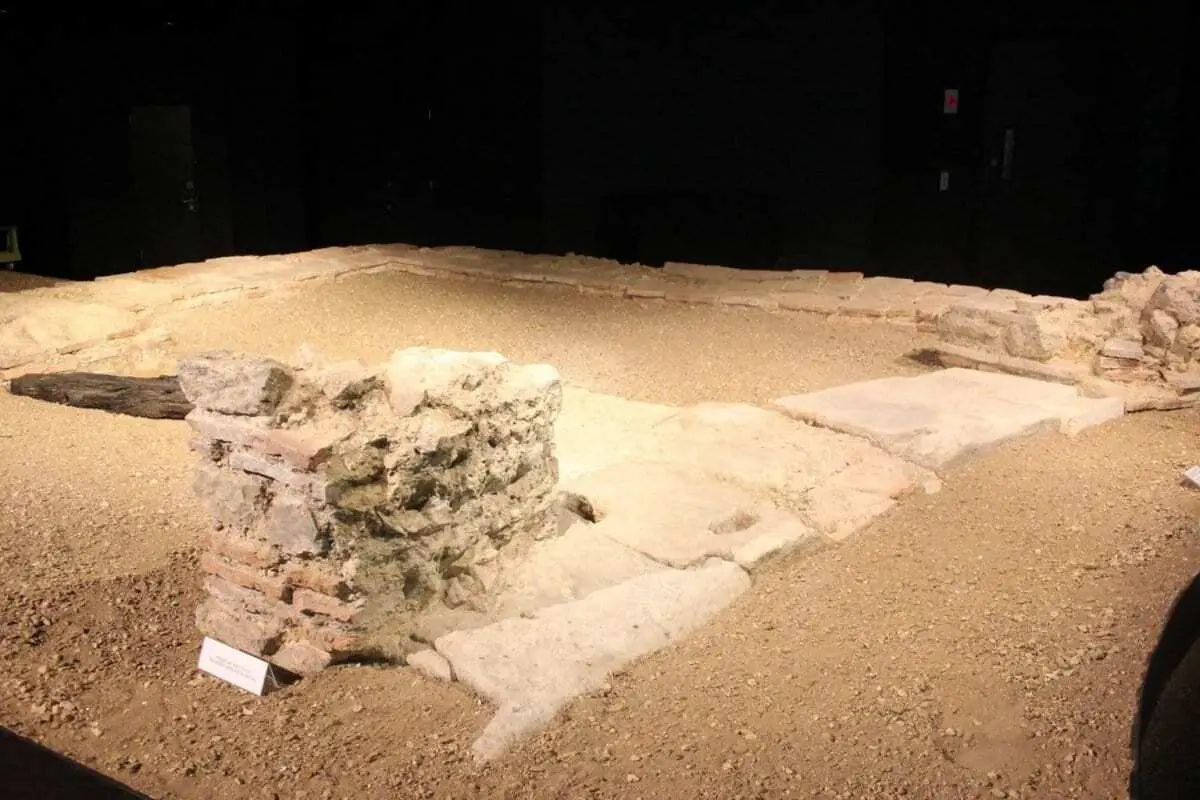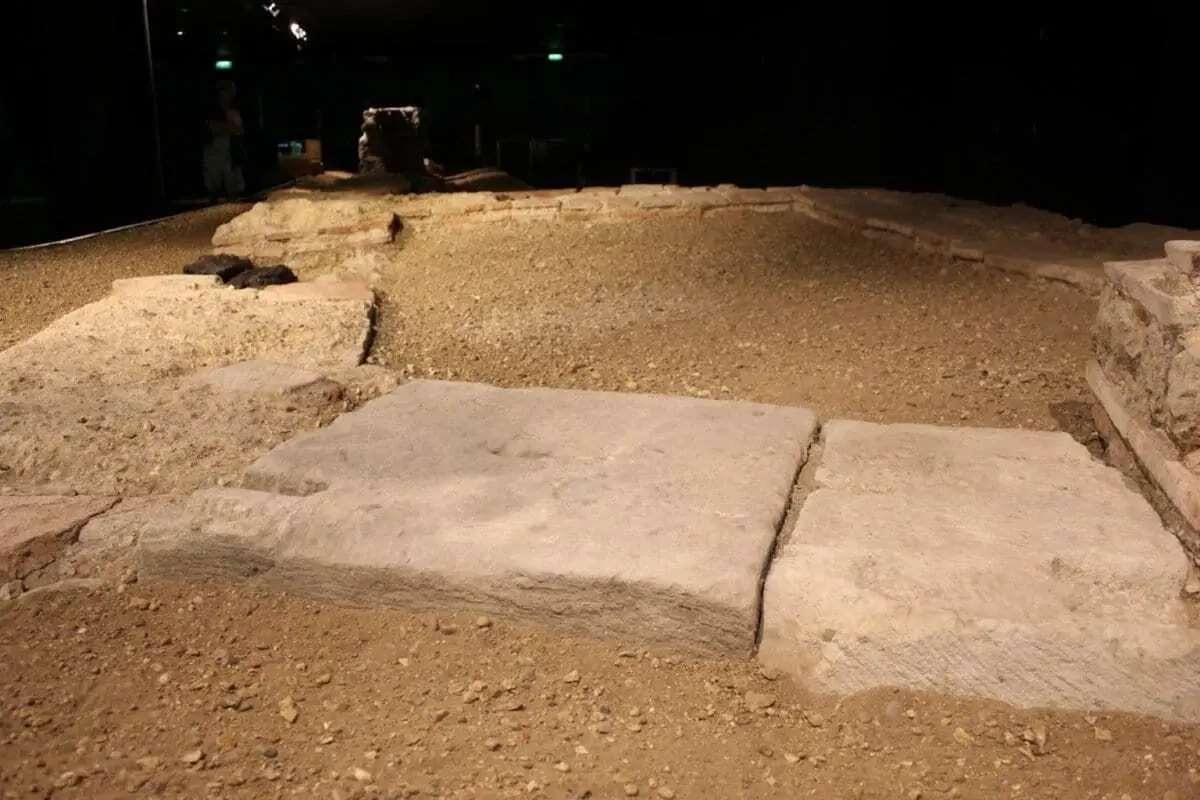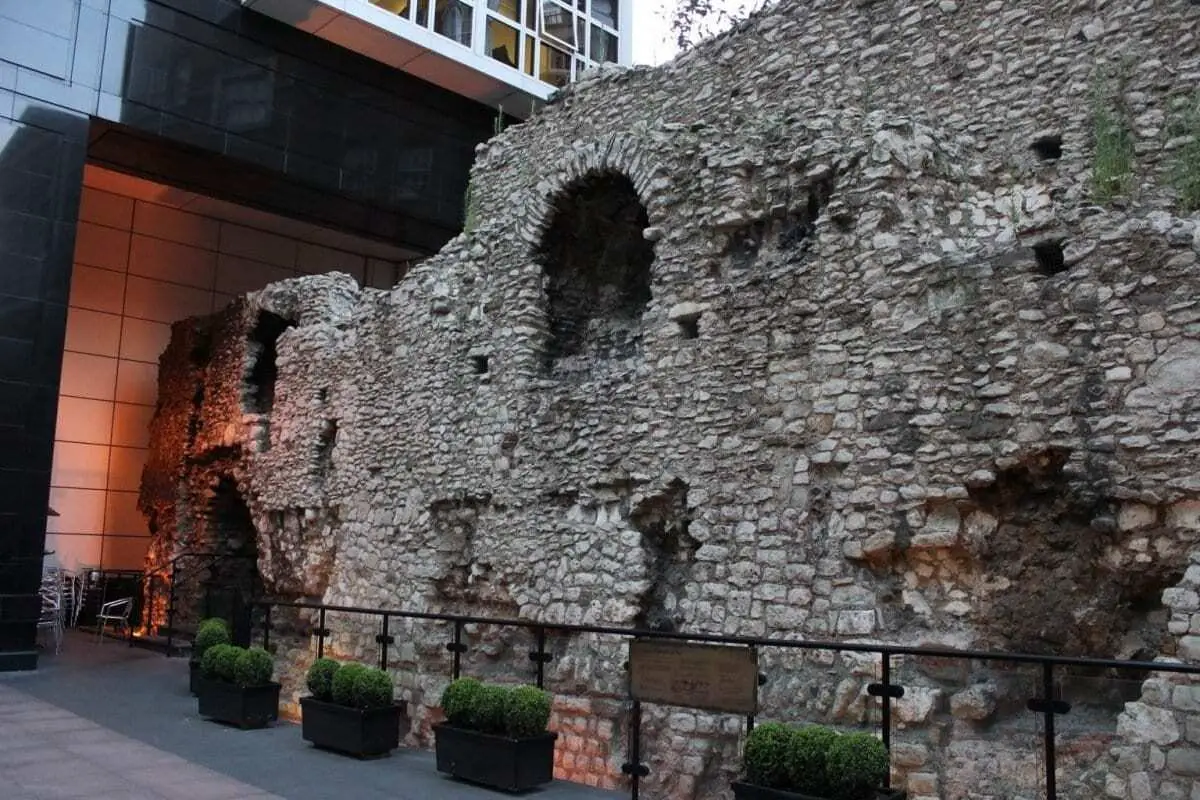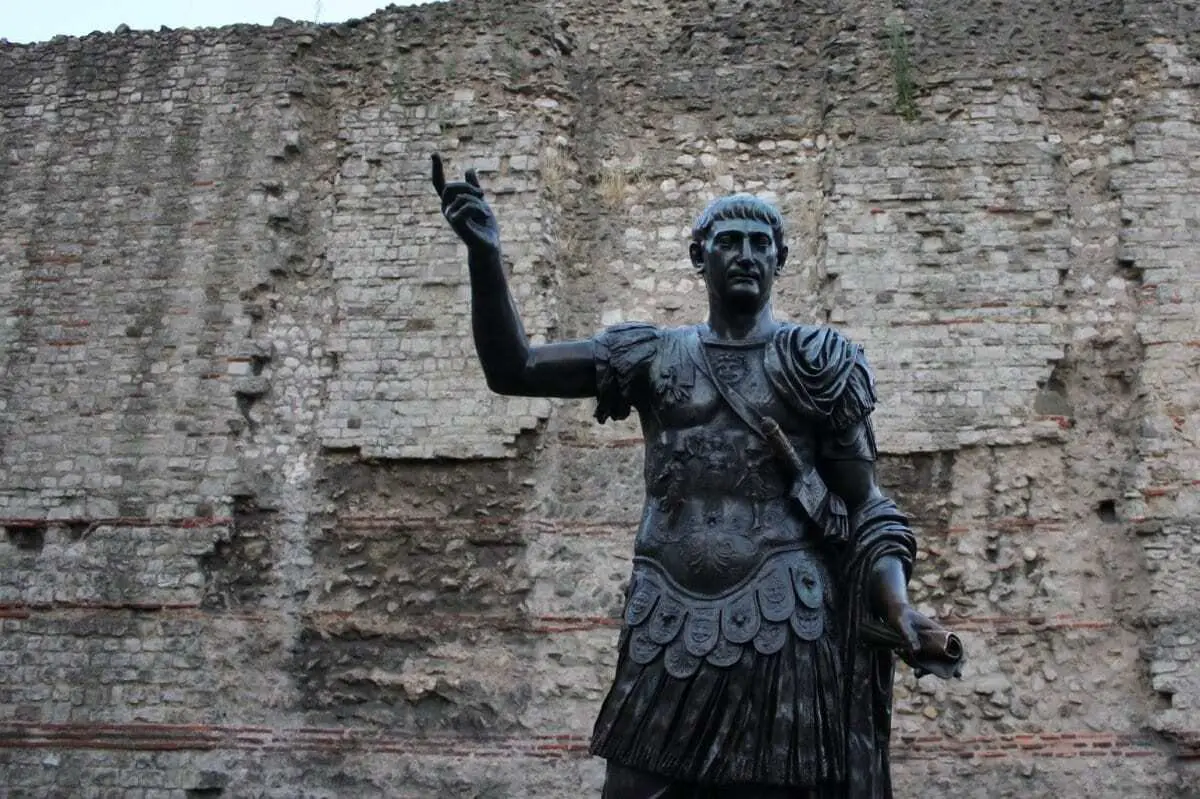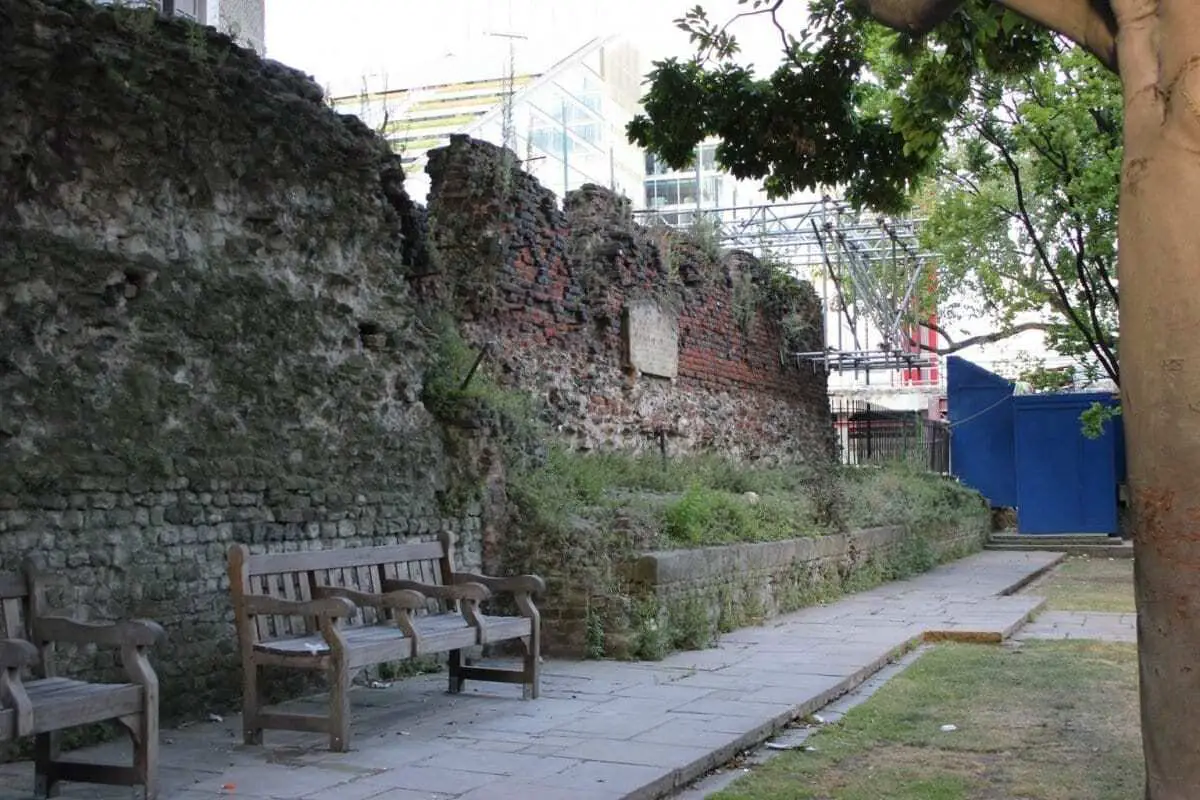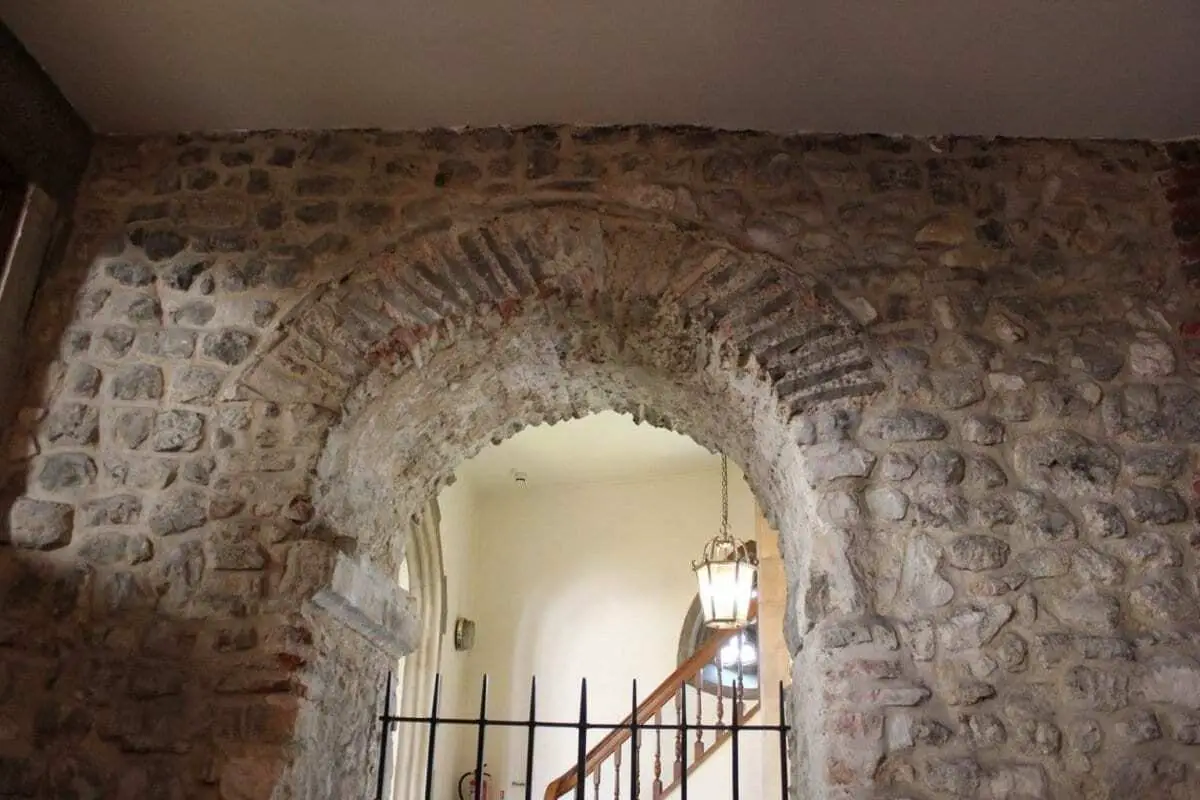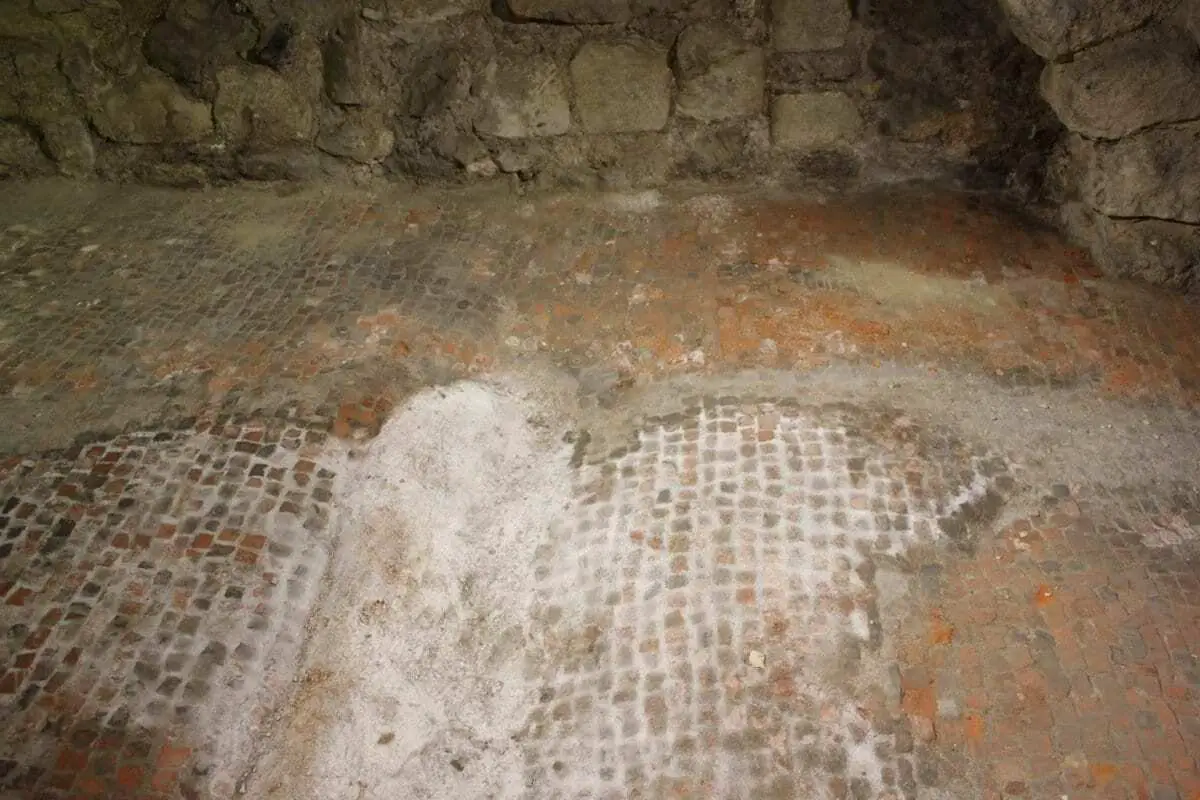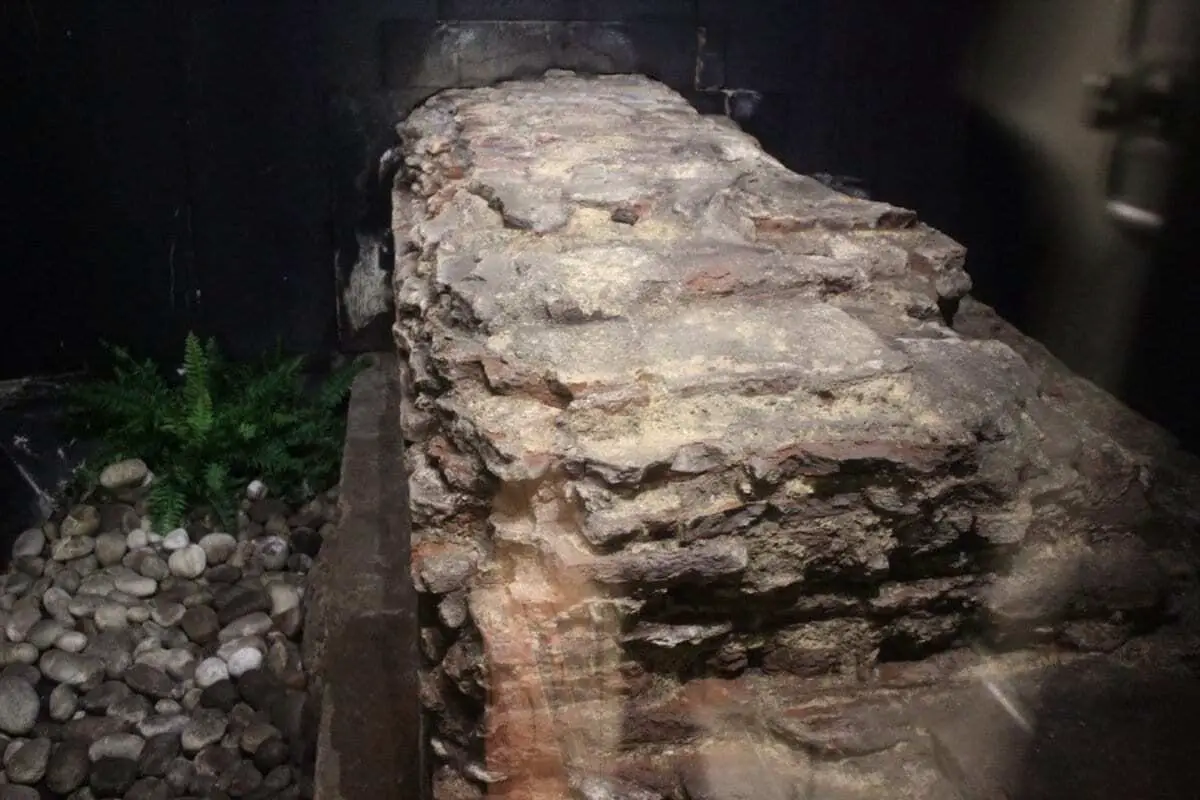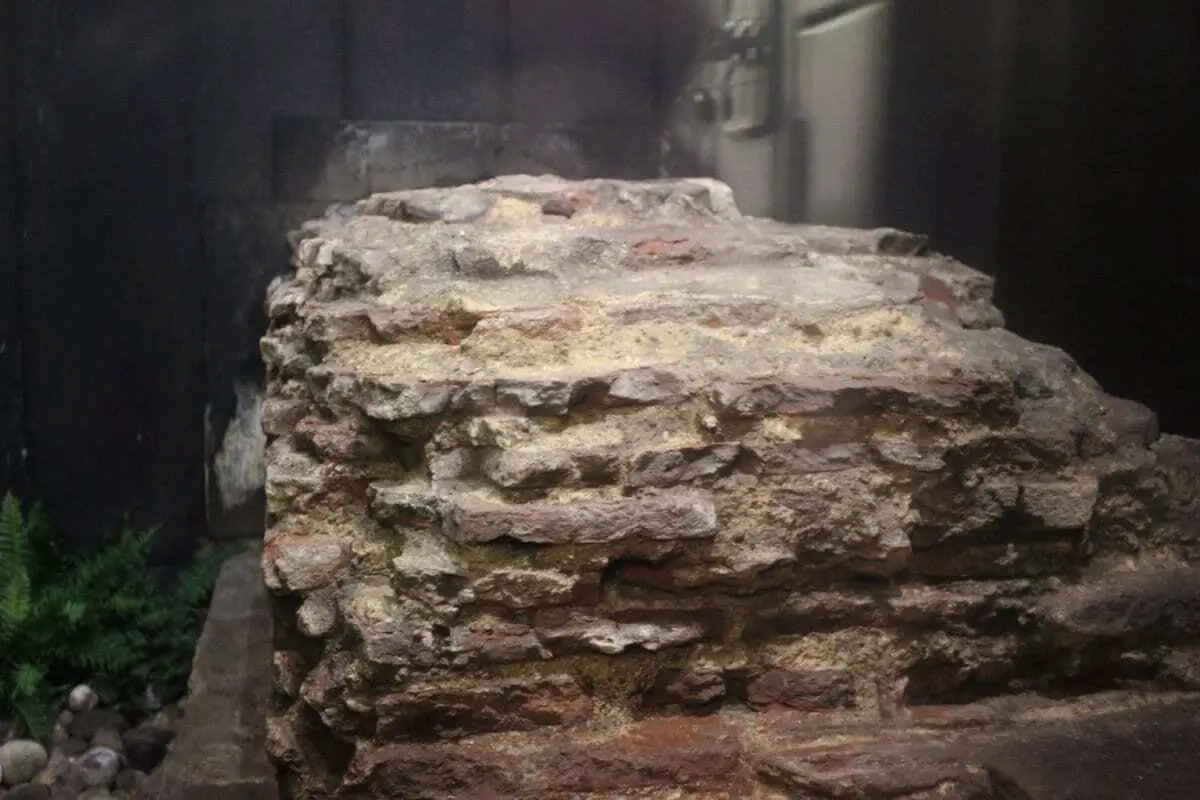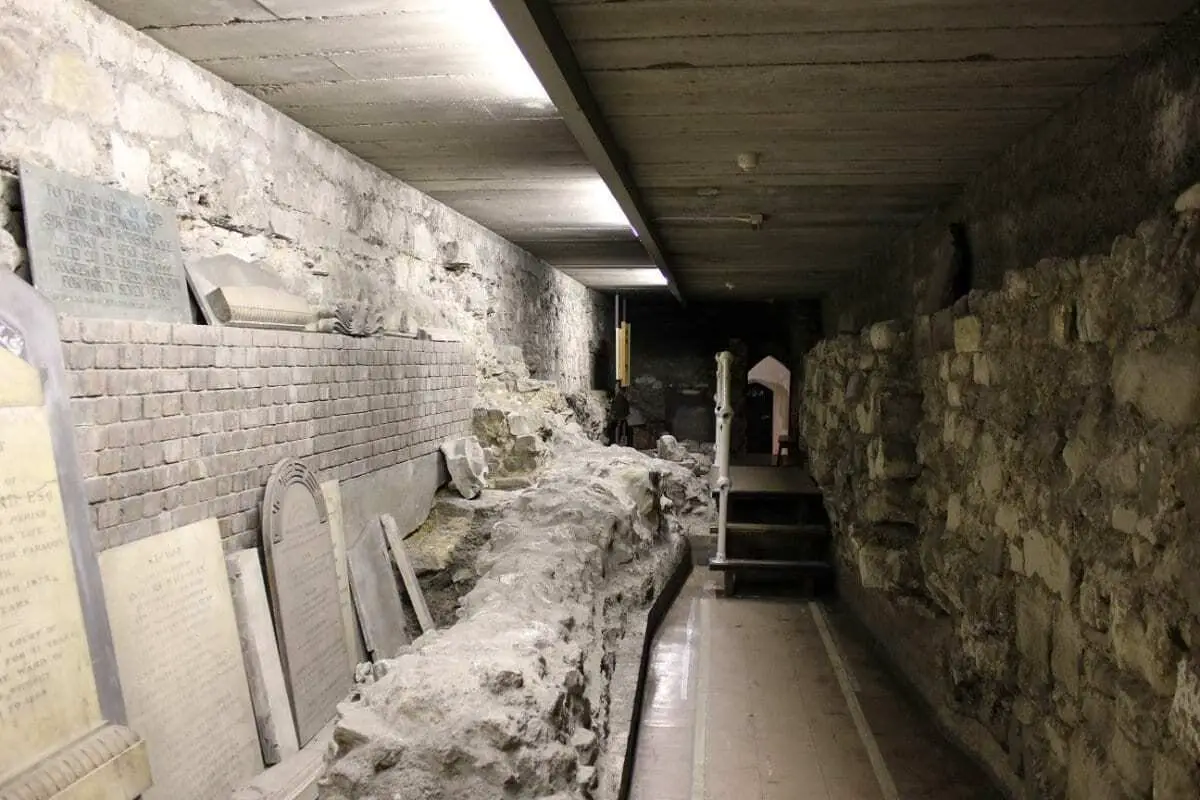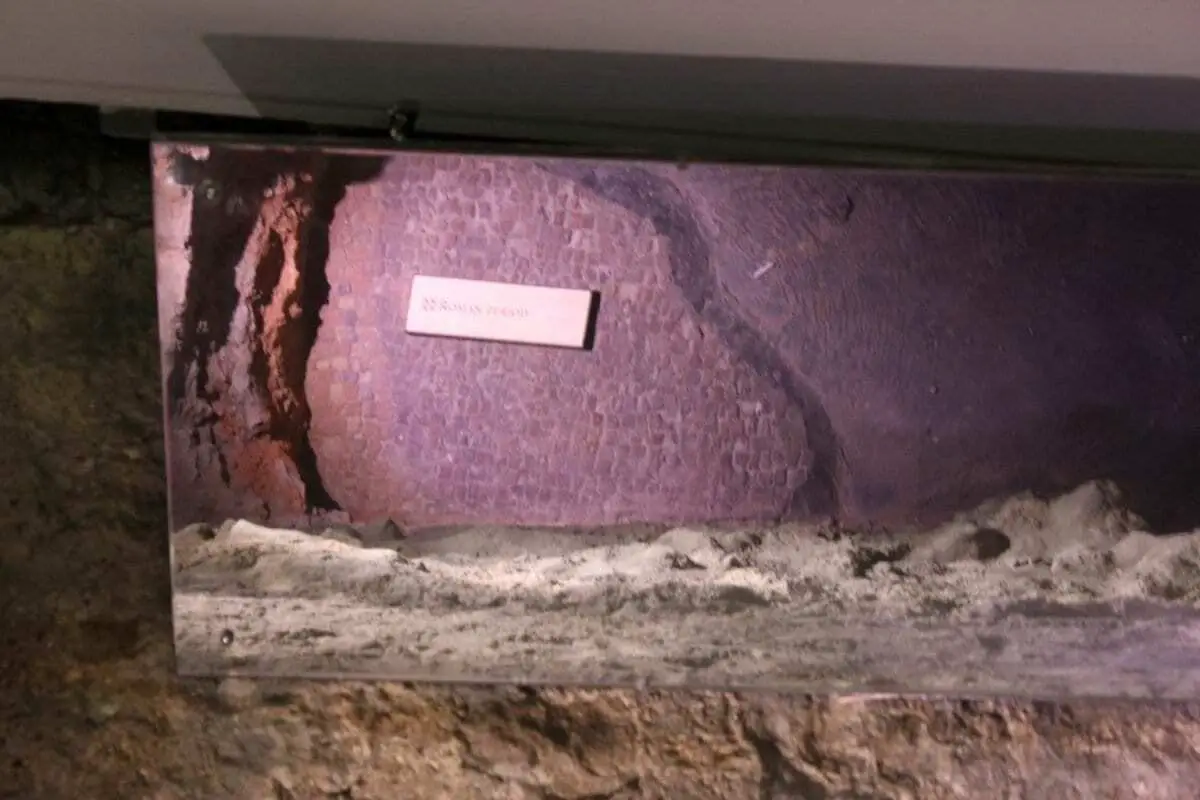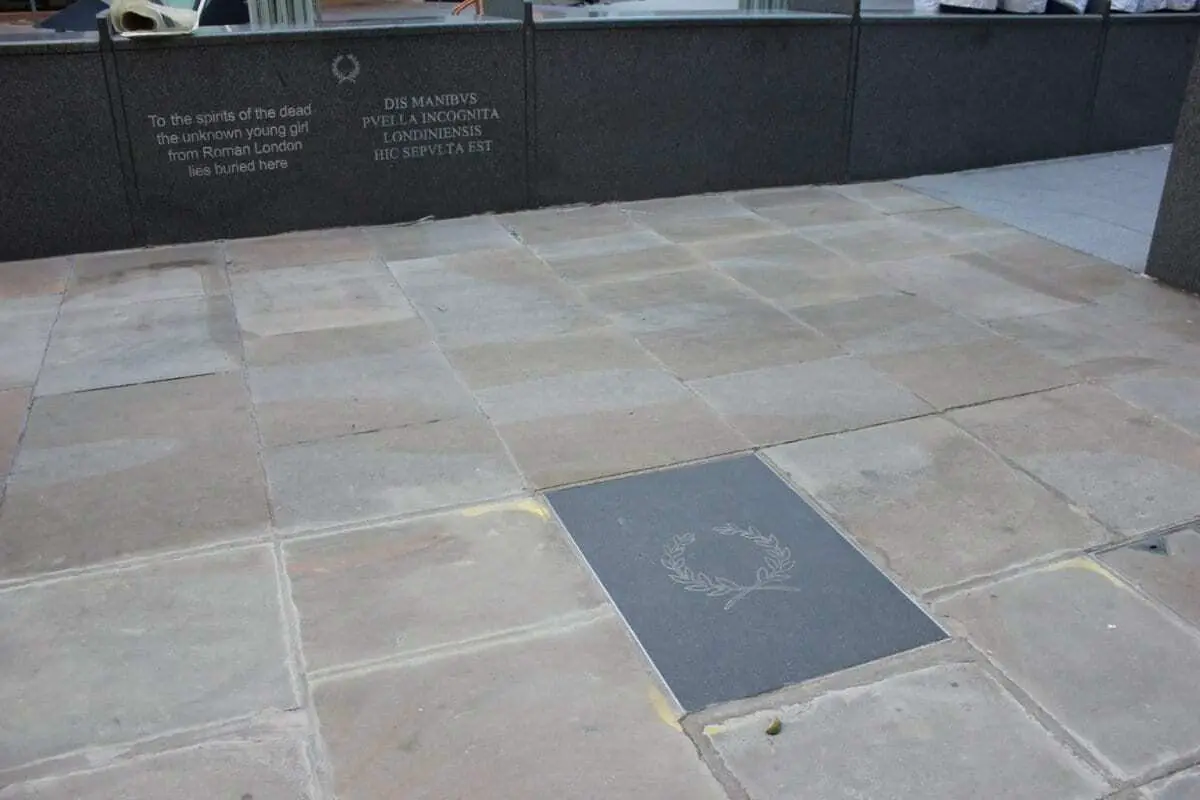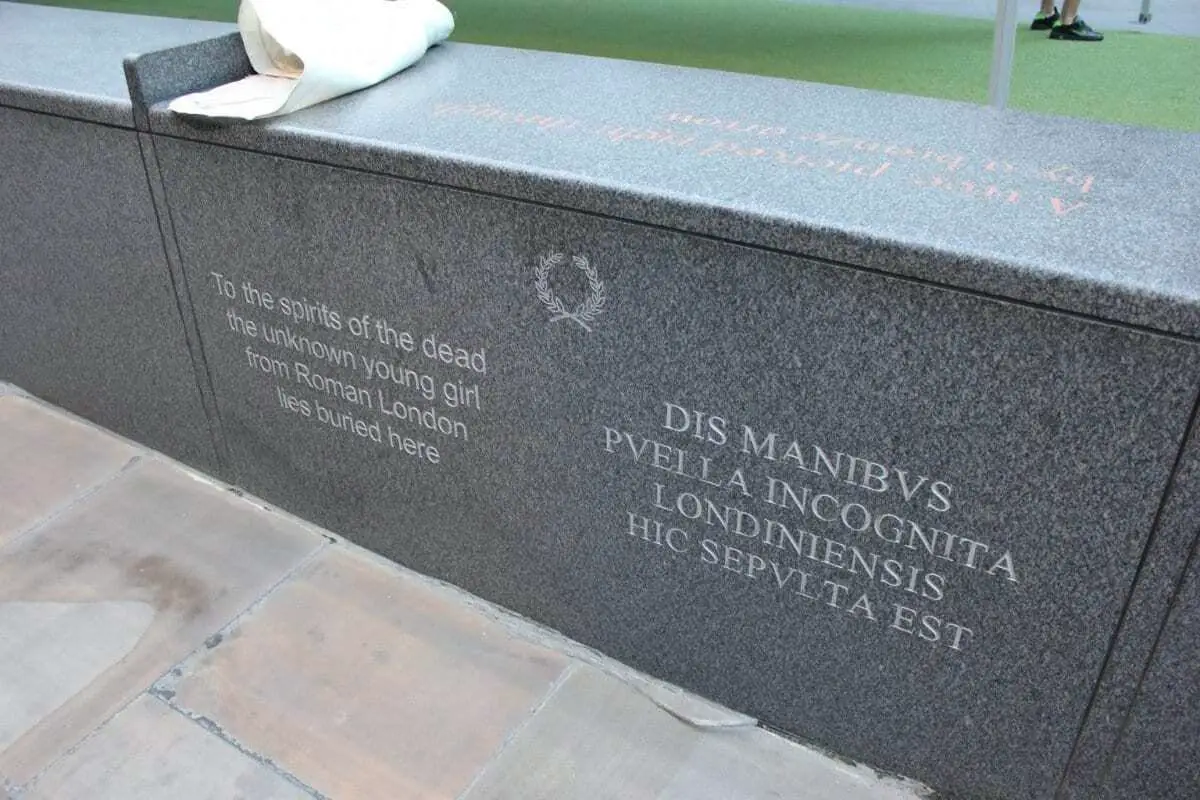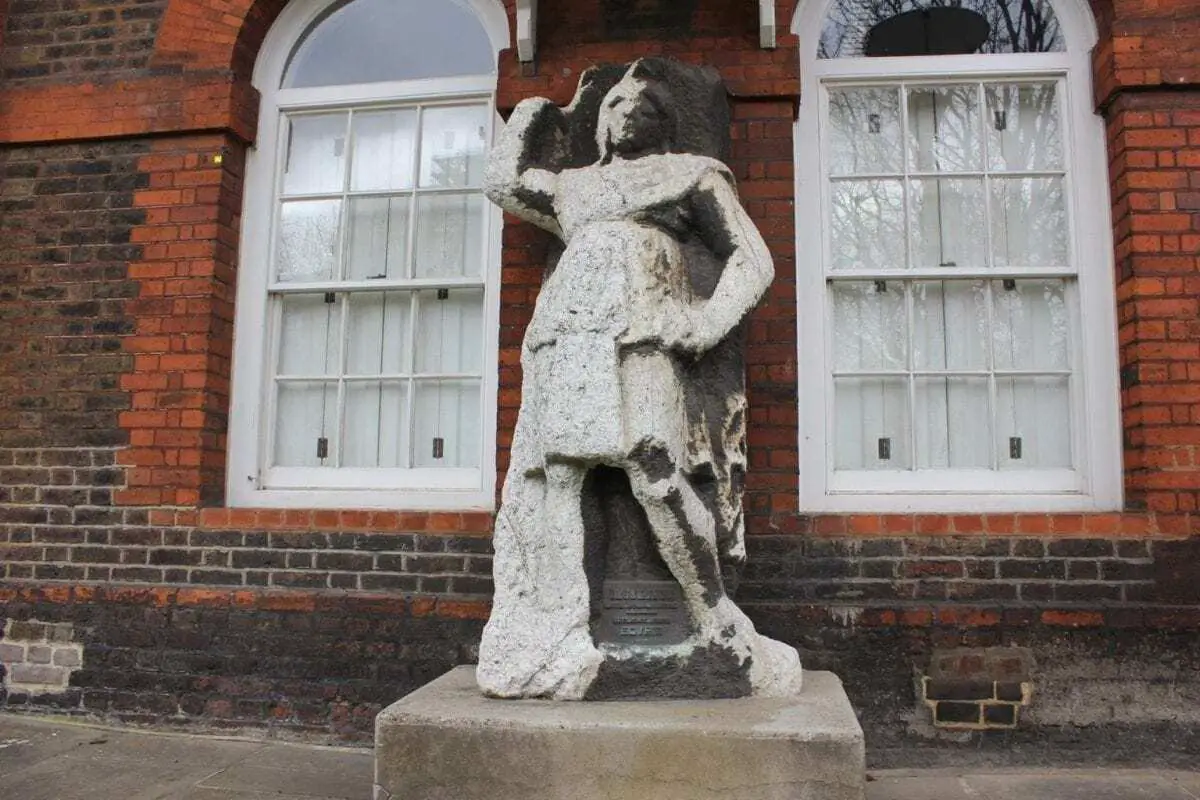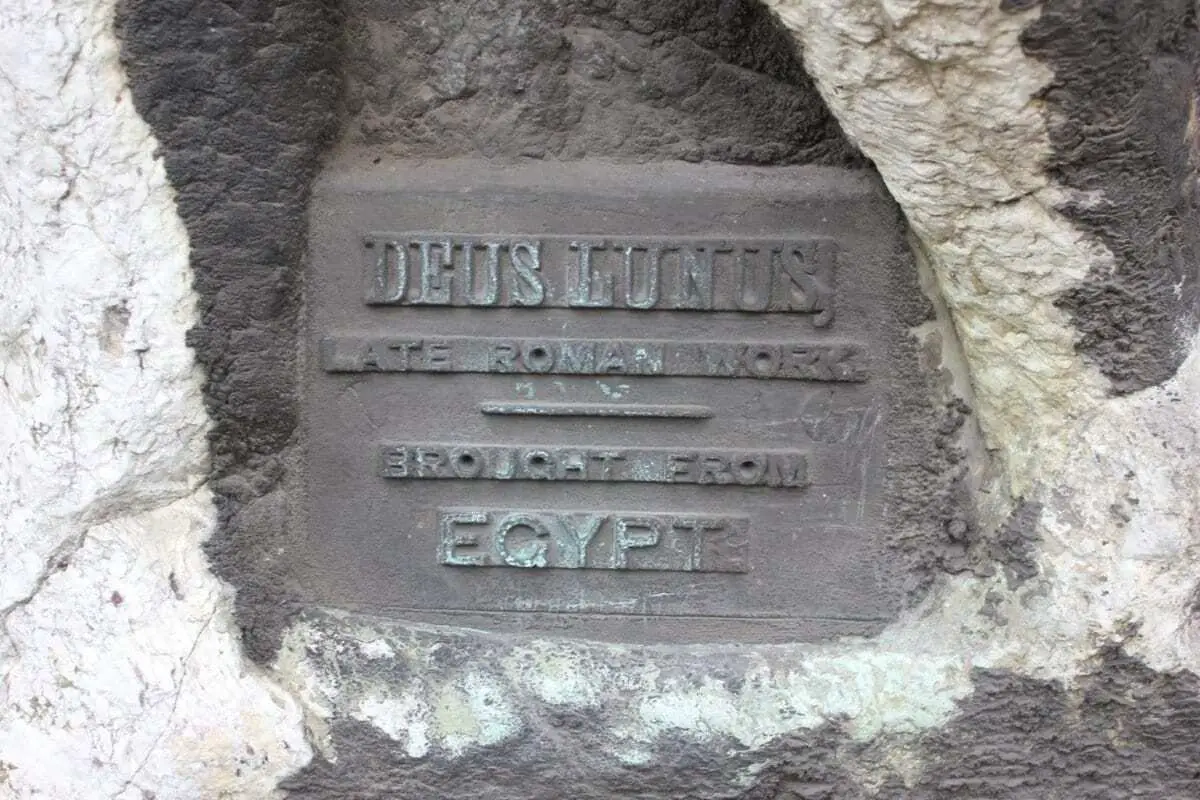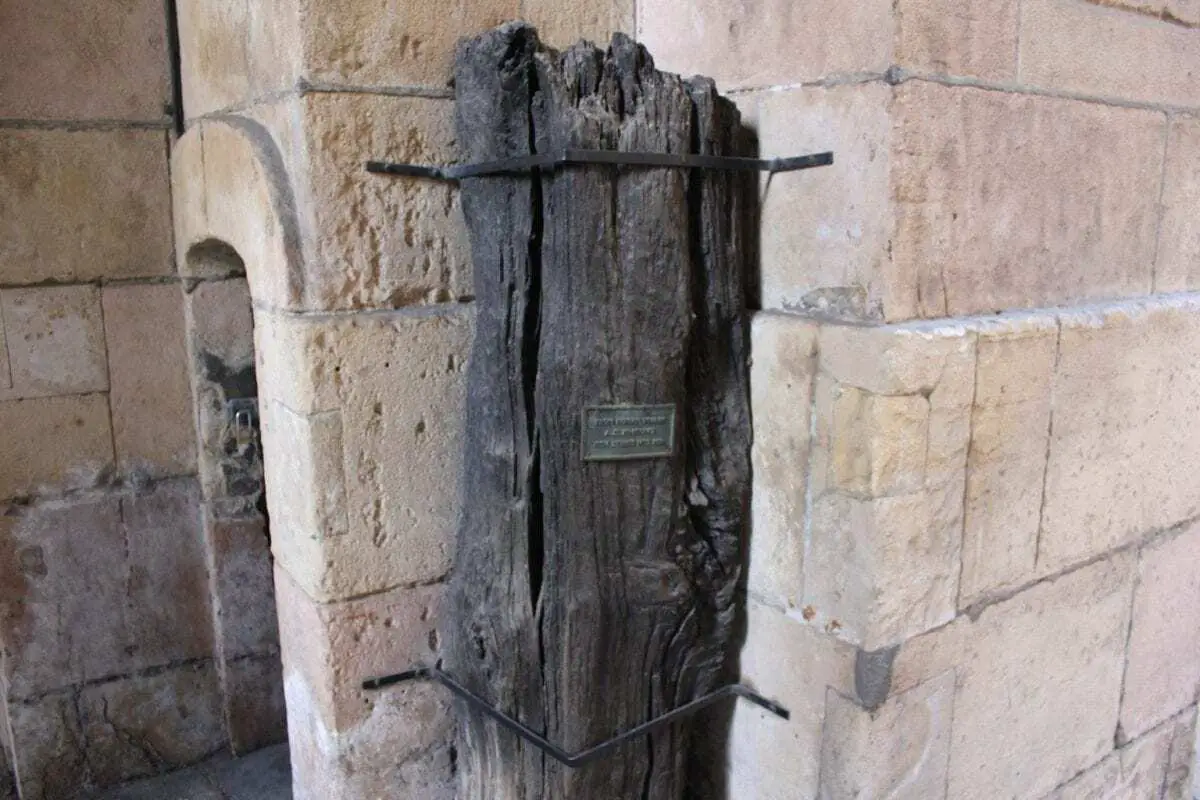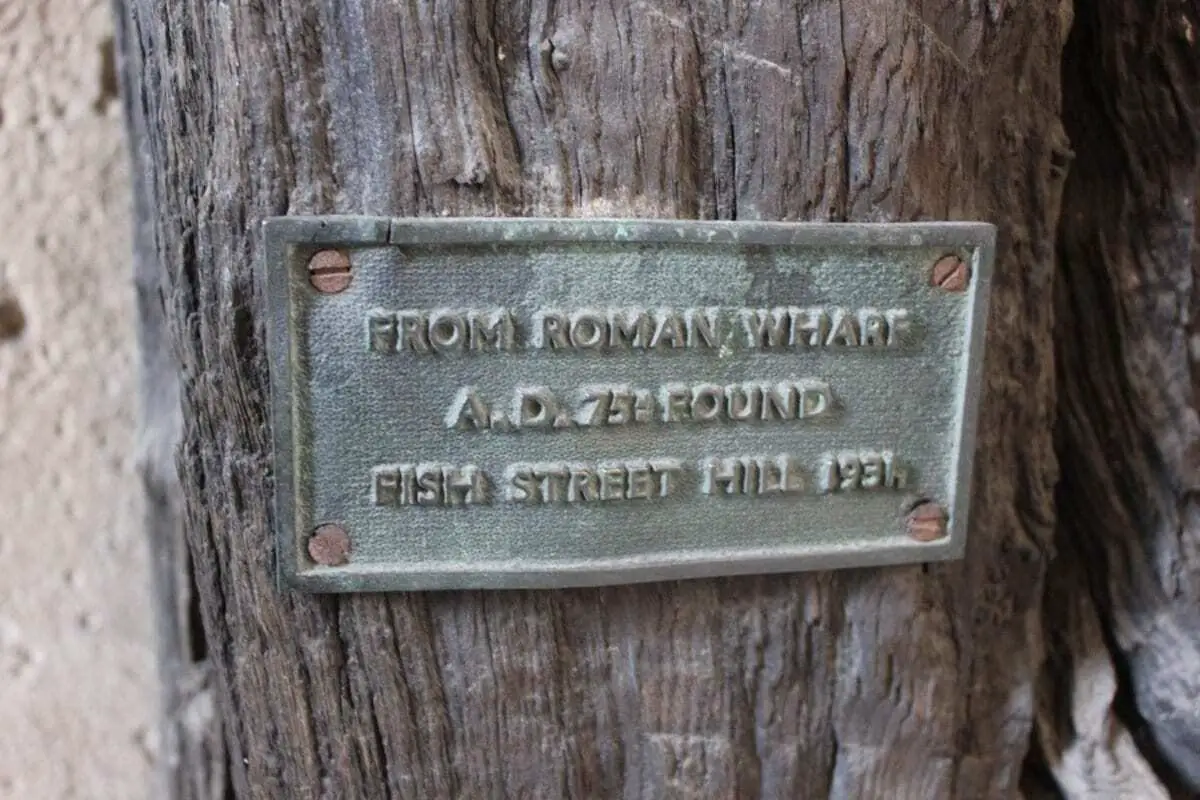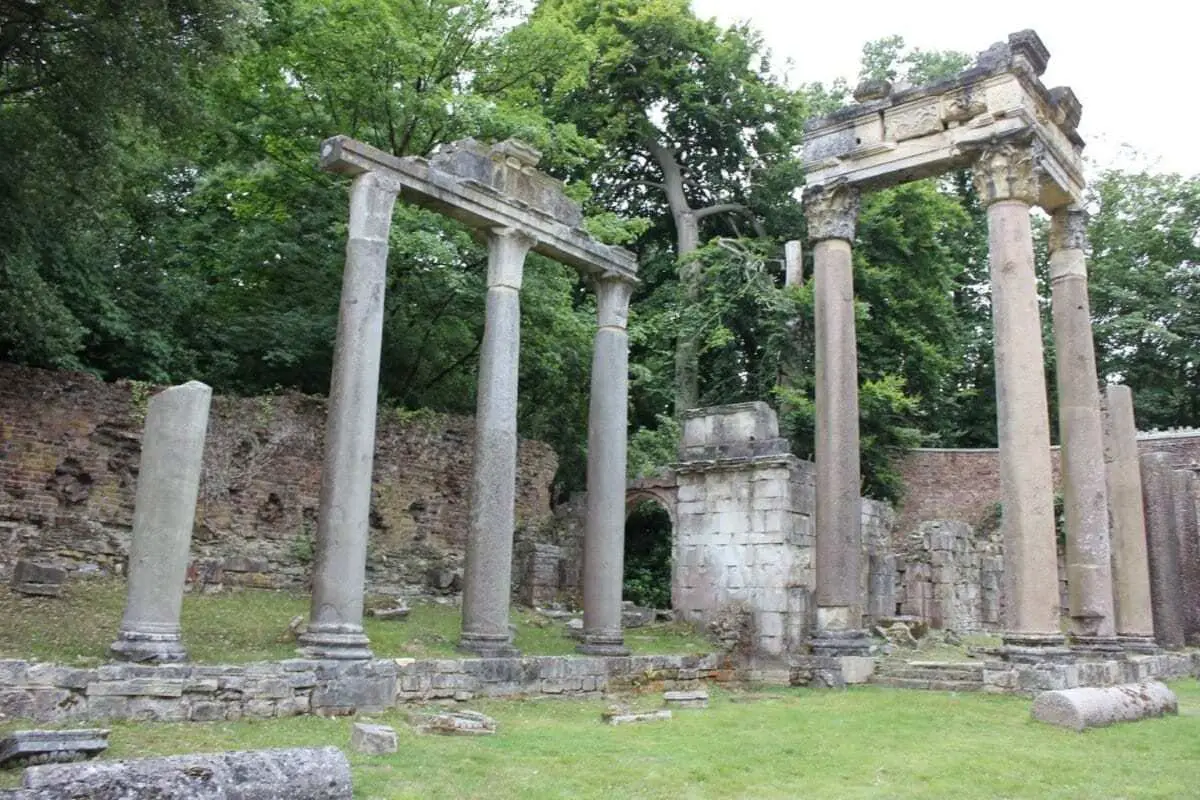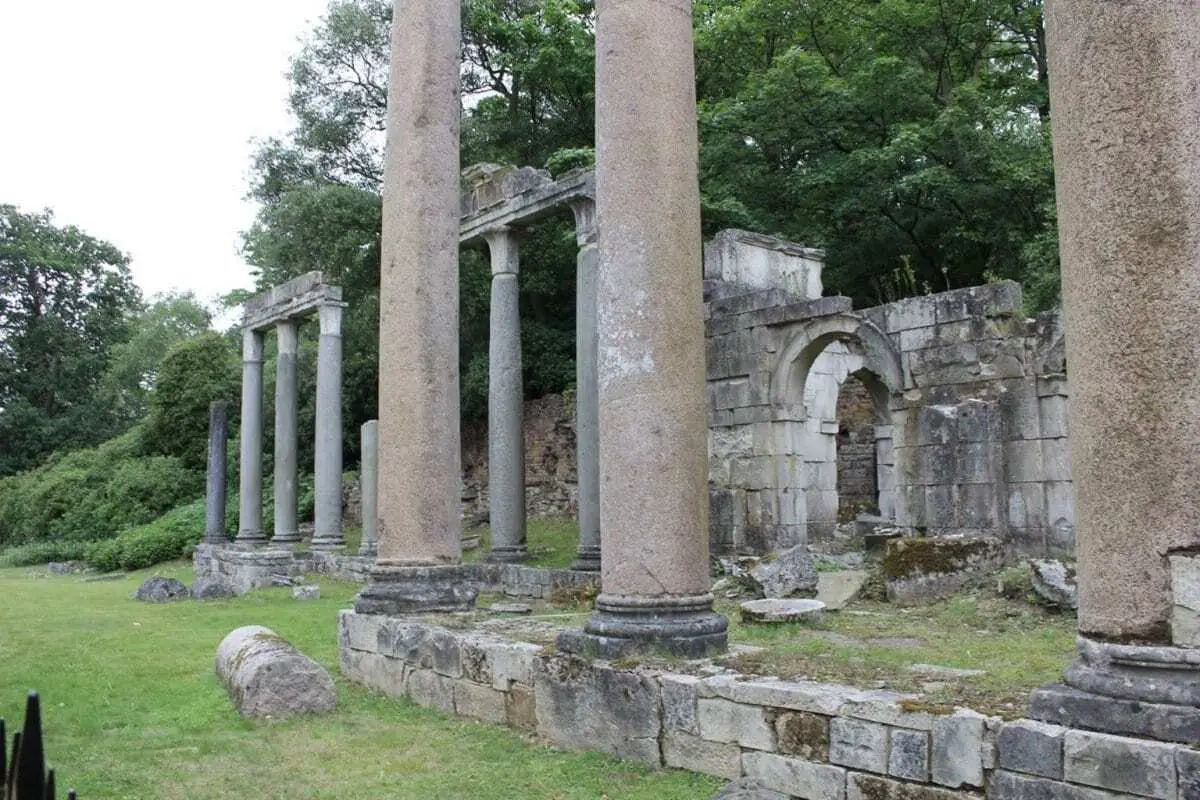Londinium was a settlement established on the current site of the City of London around AD 50. It served as a major commercial centre for the Roman Empire until its abandonment during the 5th century.
1 – Billingsgate Roman Bath House
The remains of the Billingsgate Roman bath house date from the 2nd-3rd century AD and were first discovered in 1848 during construction of the London Coal Exchange.
They remained preserved in the buildings basement, until further redevelopment at the site in the late 1960’s gave archaeologists the opportunity to further explore the ruin.
Pottery has shown that the house was erected in the late 2nd century, comprising of a north wing and east wing (with a hypocaust system – underfloor heating) around a central courtyard. At this time, the building was situated on the waterfront of the River Thames.
By the 3rd century, a bath house was added in the courtyard that contained a frigidarium (cold room), tepidarium (warm room) and a caldarium (hot room).
The building remained in use till the 5th century, but like the rest of Londinium, was eventually left to ruin. Interestingly, An Anglo-Saxon brooch was found within collapsed roof tiles.
The site was to become the first designated protected heritage site in London, forming part of the first Ancient Monuments Act of 1882.
2 – Roman Fort
The Roman fort of Londinium (City of London, England) was built around AD120, just north-west of the main population settlement.
It covered 12 acres and was almost square in size, 200m along each length. As Londinium grew, the fort was later absorbed into the defensive wall that surrounded the city.
The fort could house up to 1000 men and provided suitable barracks and gated entry.
However, a century later the site was decommissioned and buildings dismantled as the military situation in the southern edge of Britannia had become more secure.
Today, the forts northern and western edges still remain visible, along with Saxon fortifications and medieval bastion towers as part of the Barbican and Museum of London complex.
3 – Roman Amphitheatre
The Roman amphitheatre of Londinium is situated in a vaulted chamber beneath the Guildhall gallery complex.
Discovered in 1998 during a planned expansion of the Guildhall, the remains are displayed in situ and are now a protected monument.
London’s first Roman amphitheatre was built in AD70, constructed of wood, but was later renovated during the 2nd century with rag-stone walls and a tiled entrance.
Able to hold thousands of spectators, the size of the amphitheater is displayed on street level, where the circumference of the arena is marked with a black circle on the paving of the courtyard in front of the hall.
The amphitheatre was used for various events, including gladiatorial games, animal fighting, executions and religious festivities.
When the Roman province of Britannia looked to its own defences, the amphitheatre became derelict along with the remainder of the Roman city and turned to ruin.
Further Excavations by MOLAS in 2000 at the entrance to Guildhall Yard exposed remains of a great 13th-century gatehouse built directly over the southern entrance to the amphitheatre.
4 – London Wall
The London Wall is a defensive wall that encircled the City of London.
The wall was built between 190 and 225 AD, it continued to be developed by the Romans until at least the end of the 4th century, making it among the last major building projects undertaken by the Romans before Britannia looked to its own defences in AD 410.
Along with Hadrian’s Wall and the road network, the London Wall was one of the largest construction projects carried out in Roman Britain. Once built, the wall was 2 miles long and about 6 m high, encircling the entire Roman city.
Despite Londinium being abandoned and left to ruin by the Romans, the wall remained in active use as a fortification for more than another 1,000 years. It was repaired when Anglo Saxon rule was returned to London by Afred the Great during a period of Viking sieges and raids, where he carried out building projects to rebuild crumbling defences, recut the defensive ditch (Roman fossa that encircled the walls of Londinium) and found the re-settlement of Lundenburg within the walls.
The wall was further modified in the medieval period, with the addition of crenellations, gates and bastion towers. This formed part of a defensive line that incorporated The Tower of London, Baynard’s Castle and Montfichet’s Tower.
It was not until as late as the 18th and 19th centuries that the wall underwent substantial demolition, although even then large portions of it survived by being incorporated into other structures. Amid the devastation of the Blitz in WW2, some of the tallest ruins in the bomb-damaged city centre were actually remnants of the Roman wall. The wall survives today in several locations.
London Wall Coopers Row
London Wall Car Park
London Wall Tower Hill
London Wall St Alphage
5 – All Hallows-by-the-Tower
All Hallows-by-the-Tower (All Hallows Barking) is an Anglican church overlooking the Tower of London.
The church was founded in AD 675 by the Saxon Abbey at Barking and still contains a 7th century Saxon arch built from recycled Roman tiles. Works on the church also uncovered a 2nd century tessellated pavement from a domestic roman building in the church crypts which is still visible today.
Although the church was expanded and rebuilt several times between the 11th and 15th centuries, it was mostly gutted during the blitz due to Nazi bombing.
Its proximity to the Tower of London meant that it acquired royal connections, with Edward IV making one of its chapels a royal chantry and the beheaded victims of Tower executions being sent for temporary burial at All Hallows.
The church has a museum called the “Undercroft Museum” housed in the impressive church crypts that contains many Roman, Saxon and religious artefacts, along with a Byzantine stone relic and a plain stone altar from the castle of Richard I at Athlit in The Holy Land.
6 – Roman Basilica & Forum
The first Roman Basilica in Londinium was built in AD70, with large scale expansion only 20 years later.
The new site was to be nearly four times larger (170m square) and took 30 years to complete, making it one of the largest construction projects north of the Alps.
A Roman basilica was a large public building where business or legal matters could be transacted. The first basilicas had no religious function at all.
The forum, consisted of three wings, enclosed a rectangular courtyard measuring 100m east-west and 85m north-south and contained shops, banks and offices with a central market place.
7 – St Brides Church
St Bride’s Church was designed by Sir Christopher Wren in 1672 in Fleet Street in the City of London.
Activity at the site dates from the Roman period, evident by a Roman mosaic located within the church Crypts.
Worship is believed to date from the Middle Saxons in the 7th century and remained constant through to present day.
Like many sites across London, St Brides was destroyed in the Great Fire. The old church was replaced by an entirely new building designed by Sir Christopher Wren, one of his largest and most expensive works, taking seven years to build.
8 – Roman Burial
In 1995 archaeological investigations were carried out on the site of the Baltic Exchange, now known as the site of 30 St Mary Axe.
During these investigations, the body of the young Roman was found and removed to the Museum of London.
Buried over 1600 years ago, between AD 350 and 400, she was finally returned to her original resting place twelve years after she was first discovered and removed from the City of London.
An inscription on modern burial site says:
DIS MANIBVS PVELLA INCOGNITA LONDINIENSIS HIC SEPVLTA EST
To the spirits of the dead, the unknown young girl from Roman London lies buried here.
The burial would have lain just outside an early boundary ditch marking the edge of the Roman city. The body was supine, with the head to the south and the arms folded across the body (with the right forearm over the left). Pottery found in association with the burial has been dated to AD 350-400.
Her resting place resides at the foot of the Gherkin.
9 – Roman Statue of Deus Lunus
At Royal Arsenal Woolwich is a Roman statue of Deus Lunus, from the late Roman period. Deus Lunus was the male counterpart of Dea Luna, female embodiment of the moon.
It was dug up by British troops in Alexandria Egypt in 1801 and shipped to London.
10 – Roman Wharf Piling
At the church of St Magnus the Martyr, an actual pile dating from the roman period stands within the porch entry underneath the bell tower.
Part of the old Roman riverside wall, it was discovered at Fish Street Hill in 1931 during the excavation of foundations of a nearby building.
Sampling the wood has dated the pile from around 75AD.
Leptis Magna Folly Ruins
Just outside the M25 and a stones throw away from London is the Leptis Magna Roman ruins in Virginia Waters that are worthy of a mention.
Leptis Magna was a prominent city of the Roman Empire. Its ruins are located in Khoms, Libya, 130 km (81 mi) east of Tripoli, on the coast where the Wadi Lebda meets the sea. The site is one of the most spectacular and unspoiled Roman ruins in the Mediterranean.
Part of an ancient temple was brought from Leptis Magna to the British Museum in 1816 and installed at the Fort Belvedere royal residence in England in 1826. It now lies in part of Windsor Great Park between the south shore of Virginia Water and Blacknest Road.
Download Uncovered London Application
 |
 |



